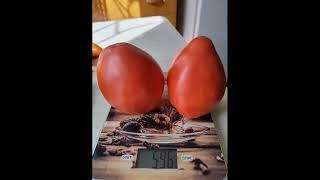Farming strawberries can be a rewarding venture, but it requires careful planning and attention to detail. Here’s an overview of what’s involved:
1. Choosing the Right Variety
Strawberries come in different varieties, each suited to specific climates and growing conditions. The main types are:
June-bearing: Produce a large crop in late spring or early summer.
Everbearing: Yield strawberries throughout the growing season, typically from summer to fall.
Day-neutral: Fruit continuously throughout the growing season, regardless of day length.
2. Soil and Location
Strawberries prefer well-drained, sandy-loam soil with a pH between 5.5 and 6.8. They need full sun—at least 6-8 hours a day. Ensure the planting area is free from weeds and has good air circulation to reduce disease risk.
3. Planting
Timing: Plant strawberries in early spring or late fall, depending on your region’s climate.
Spacing: Space plants about 12-18 inches apart in rows that are 3-4 feet apart.
Method: For bare-root plants, make sure the crown (where the roots meet the stems) is level with the soil surface. For container plants, plant at the same depth they were growing in the pot.
4. Watering and Fertilizing
Watering: Keep the soil consistently moist but not waterlogged. Drip irrigation is ideal as it keeps the leaves dry and reduces disease risk.
Fertilizing: Use a balanced fertilizer or one specifically formulated for strawberries. Fertilize in early spring and again after the first harvest.
5. Mulching
Mulch helps retain soil moisture, suppress weeds, and keep the fruit clean. Straw, pine needles, or black plastic are common mulching materials.
6. Pruning and Maintenance
Early care: Remove flowers during the first year to encourage strong root development.
Renovation: After the harvest, cut back old leaves and thin out the plants to improve air circulation.
7. Pest and Disease Management
Monitor for common pests like aphids, spider mites, and slugs. Diseases like powdery mildew and root rot can be managed by choosing resistant varieties, practicing crop rotation, and maintaining proper spacing and air flow.
8. Harvesting
Harvest strawberries when they are fully red. Gently twist or cut the fruit from the plant, leaving the green cap attached. Pick in the morning when the berries are cool and firm.
9. Winter Care
In colder climates, protect plants with mulch or cover them with a row cover to prevent winter damage.
Strawberry farming can be intensive, but with the right care and management, it can yield delicious and lucrative results.
1. Choosing the Right Variety
Strawberries come in different varieties, each suited to specific climates and growing conditions. The main types are:
June-bearing: Produce a large crop in late spring or early summer.
Everbearing: Yield strawberries throughout the growing season, typically from summer to fall.
Day-neutral: Fruit continuously throughout the growing season, regardless of day length.
2. Soil and Location
Strawberries prefer well-drained, sandy-loam soil with a pH between 5.5 and 6.8. They need full sun—at least 6-8 hours a day. Ensure the planting area is free from weeds and has good air circulation to reduce disease risk.
3. Planting
Timing: Plant strawberries in early spring or late fall, depending on your region’s climate.
Spacing: Space plants about 12-18 inches apart in rows that are 3-4 feet apart.
Method: For bare-root plants, make sure the crown (where the roots meet the stems) is level with the soil surface. For container plants, plant at the same depth they were growing in the pot.
4. Watering and Fertilizing
Watering: Keep the soil consistently moist but not waterlogged. Drip irrigation is ideal as it keeps the leaves dry and reduces disease risk.
Fertilizing: Use a balanced fertilizer or one specifically formulated for strawberries. Fertilize in early spring and again after the first harvest.
5. Mulching
Mulch helps retain soil moisture, suppress weeds, and keep the fruit clean. Straw, pine needles, or black plastic are common mulching materials.
6. Pruning and Maintenance
Early care: Remove flowers during the first year to encourage strong root development.
Renovation: After the harvest, cut back old leaves and thin out the plants to improve air circulation.
7. Pest and Disease Management
Monitor for common pests like aphids, spider mites, and slugs. Diseases like powdery mildew and root rot can be managed by choosing resistant varieties, practicing crop rotation, and maintaining proper spacing and air flow.
8. Harvesting
Harvest strawberries when they are fully red. Gently twist or cut the fruit from the plant, leaving the green cap attached. Pick in the morning when the berries are cool and firm.
9. Winter Care
In colder climates, protect plants with mulch or cover them with a row cover to prevent winter damage.
Strawberry farming can be intensive, but with the right care and management, it can yield delicious and lucrative results.
- Категория
- Севооборот
Комментариев нет.




